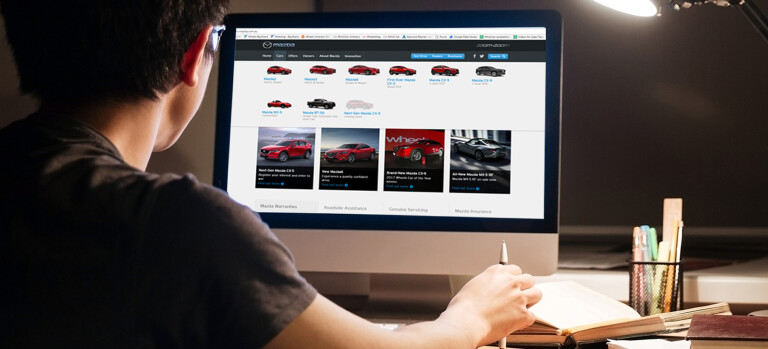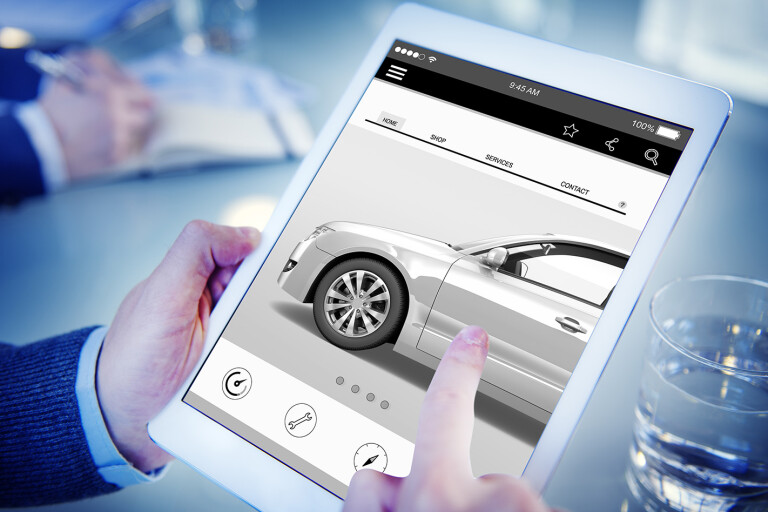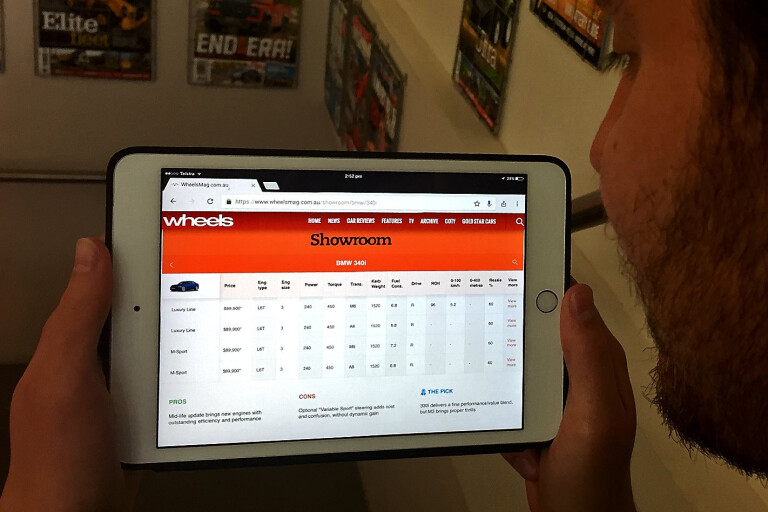
Snapshot
- Just three of the top 10 manufacturers have confirmed online sales throughout 2021
- Combined electric vehicle sales amount to less than 800 units
- Peak bodies expect business models to change over coming years
A year of uncertainty for the Australian automotive industry in 2021 didn't stop buyers going to dealerships to buy their new cars in person.
Despite lockdowns bringing a number of states to a grinding halt and closing non-essential businesses like car dealerships, the industry bounced back after an even tougher 2020 to break past one million new vehicle registrations throughout the year.
However, the final number of 1,049,831 units delivered could possibly have been exceeded had more of the top 10 brands for the year adopted an online buying service – with just three manufacturers offering the ability to do so.

Both Hyundai and Kia told Wheels they had sold some examples of their model ranges online last year – although ironically, both cars are related.
Launched in 2021, Hyundai's Ioniq 5 and the Kia EV6 electric vehicles are both based on the E-GMP platform, with the Ioniq 5 going on sale in October while the EV6's first allocation was effectively sold before a price was even revealed.
Before the year ended, Hyundai had managed to sell 172 examples of its Ioniq 5, whereas Kia shifted "close to" 600 EVs through online orders – accounting for just 0.24 per cent and 0.88 per cent of total sales respectively.
Of the remaining brands which ended up in the top 10 for sales last year – Toyota, Mazda, Ford, Mitsubishi, Nissan, Volkswagen, MG and Subaru – only one offers buyers the ability to complete a purchase solely through its online platform.

While it couldn't provide specific figures of how many vehicles were sold, Subaru has implemented an online sales model since the 2012 introduction of the BRZ, now applying to all models across its range.
A spokesperson for the manufacturer told Wheels its online platform allows customers to purchase a car with the convenience of online buying, but also with the service of a dealer.
"In 2012, Subaru Australia introduced its 'buy online' service with BRZ. Shortly after, this service was further expanded to sell other Subaru models via our website.
"Offering 'buy online' to our customers is about embracing the digital age and providing choice for how customers can choose to interact with our brand and our dealer network to purchase a new car.
"Our dealership network and in-store experience remain a vital part of our business, and whether the decision is to purchase in-store or online, we endeavour to provide a seamless buying experience for all Subaru customers."
.jpg )
However, it's not just Hyundai, Kia and Subaru which have adapted to the modern ways of shopping. Tesla was the first to go online when it burst onto the scene in an attempt to disrupt the establishment, with Audi seeing the writing on the wall shortly after the global pandemic kicked off, and BYD seemingly following suit with its new range of incoming models.
Newcomer Polestar has only recently launched in Australia and is doing so without a physical dealership presence – only letting buyers choose their next vehicle online.
While it is in the electric vehicle manufacturer's plans to start opening up some bricks and mortar locations, it has been encouraged by initial online demand for its Polestar 2 model after completing an east coast roadshow last year.
"At Polestar we believe in simplifying the purchase journey for our customers and creating a seamless online experience," a Polestar spokesperson told Wheels.
"Customers purchase their vehicles from Polestar direct via an online portal, which includes the option of Polestar Finance. This model provides customers with the flexibility and transparency of vehicle availability, pricing, and production right through to delivery.
"Our retail locations will be in high-footfall areas, where consumers are already visiting or shopping for the ultimate convenience. We offer the ability to talk with product specialists who are available to inform customers on Polestar and its products, as well as assist customers to make their online purchase if required."

Australian Automotive Dealer Association (AADA) CEO James Voortman told Wheels a clear majority of consumers still want to buy their new cars from a bricks and mortar store, with test drives becoming one of the most crucial aspects of the buying experience.
"We are seeing more brands offer the ability for customers to buy a vehicle sight unseen, and while online sales have increased during the pandemic the majority of customers are still hesitant to do so," said Voortman.
"Our research has found that around one in four customers say that they’d consider buying online, with three in five (61 per cent) saying they’d be unwilling to do so.
"The biggest barrier at the moment to online sales is that 91 per cent of customers consider it important to be able to test drive a vehicle before committing to buy it.
"COVID-19 has shown us that more and more of the car buying process can occur online, and we would expect that the proportion of customers willing to buy online will increase. But customers value the test drive and as vehicles become more technologically sophisticated, I expect many customers will value the opportunity to have a dealer demonstrate these technologies to them.
"Even in an online-only scenario – there is still a role for a dealer whether it is delivering the vehicle, handling the physical elements of the trade-in or managing that aftersales relationship."

Tony Weber, Chief Executive of the Federal Chamber of Automotive Industries, said the natural evolution of demand from consumers will drive manufacturers to change how they sell cars, agreeing with the AADA on the need for aftersales support to continue regardless.
"This is an argument about supply and demand, and I don’t think this will be driven by supply, it will be driven by demand," Weber told Wheels.
"The traditional model which has existed in Australia for automotive dealerships stretches back to the 1950s and with little change will not last forever. It won’t survive in automotive, just like it won’t survive in any other sector of the economy, because consumers demand change because we have the technology and capability to do it in different ways now.
"What consumers will want is the most efficient, easiest way to purchase a vehicle, and they’ll make that decision about what product they buy as well as the service for that product at the point of sale and aftersale. The consumer will drive it; not the OEM, not the dealer.
"The reality is, if you buy a car and have a bad experience, you probably won’t go back and the masses won’t go back. However, if you provide both the product and service to market, it has to be done in an efficient and effective way so the consumer experience is a pleasant one.
"The magic of the Australian market is there’s so much competition here. If you can’t do those things well as a brand, you can bet your bottom dollar someone else will do it better and they’ll get the market share.
"We need to satisfy consumers in terms of service – and that will require a footprint right across the country. I would envisage dealers still have a huge role to play in the future because of their service."

COMMENTS